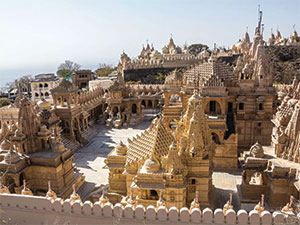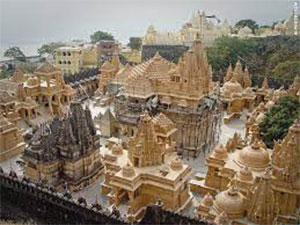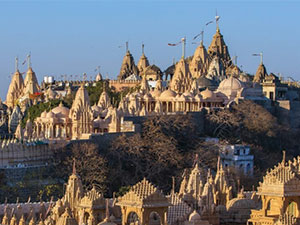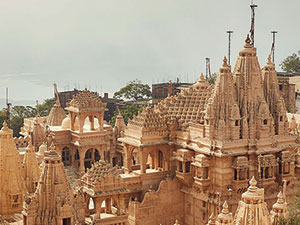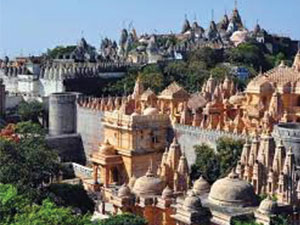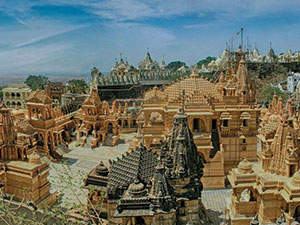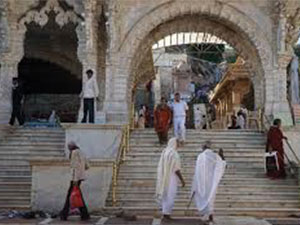Pālītāṇā is a city in Bhavnagar district, Gujarat, India. It is located 50 km southwest of Bhavnagar city and is a major pilgrimage centre (“shashwat tirth”) for Jains. It is first of the two vegetarian cities in the world.
Palitana is associated with Jain legends and history. Ādinātha, the first of the Jain tirthankaras, is said to have meditated on the Shatrunjaya hill, where the Palitana temples were later constructed.
What eventually became Palitana State was founded in 1194. In 1656, Shah Jahan’s son Murad Baksh (the then Governor of Gujarat) granted the village of Palitana to the prominent Jain merchant Shantidas Jhaveri. The management of the temples was assigned to the Anandji Kalyanji Trust in 1730.
During the British Raj, Palitana was a princely state in the Kathiawar Agency of the Bombay presidency. It ceased to exist with the establishment of independent India in 1948.
Palitana is the world’s only mountain that has more than 900 temples. The Palitana temples and whole mountain are considered the most sacred pilgrimage place (tirtha) by the Jain community, and is the world’s largest Temple Complex. There are more than 3000 temples located on the Shatrunjaya hills, exquisitely carved in marble. The main temple on top of the hill, is dedicated to the first Tirthankara Rishabhanatha (Rishabhadeva). The temples were built by generations of Jains over a period of 900 years, from the 11th century onwards. The temples are managed by the Anandji Kalyanji Trust associated with the Kasturbhai Lalbhai group. From the foot of the hill to the top there are about 3,800 stone steps to facilitate climbing.
The temples are exquisitely carved in marble, veritable prayers in stone. To an observer, these appear to be ivory miniatures when seen from a distance. Created by master craftsmen, the most important temple is that of the first teerthankara, Shri Adishwar. It has ornate architectural motifs, though in its overall plan it is simpler than the Choumukh. Other notable temples are those of Kumarpal, Vimalshah and Sampriti Raja. Kumarpal Solanki, a great Jain patron, probably built the earliest temple. The temple has a fabulous collection of jewels, and these can be seen with special permission. The temples date from 11th to the 20th century. From 1865 to 1910 it was ruled by King Dhanpat.
Belief
Every devout Jain aspires to climb to the top of the mountain at least once in his lifetime, because of its sanctity. Not just the temples on the hill are sacred, but as per Jain Scriptures entire hill is sacred right from top to bottom. The journey is arduous. The walk up the stone stairway hewn into the mountain face takes about an hour and a half. For those unable or unaccustomed to the strain, sling-chairs are available at a bargain. The code for the climbers is stringent, in keeping with the rigours of the Jain faith. Food must neither be eaten nor carried on the way. The descent must begin before it is evening, for no soul can remain atop the sacred mountain during the night.


